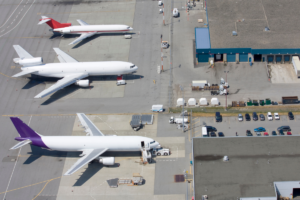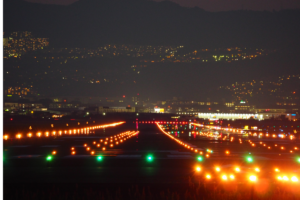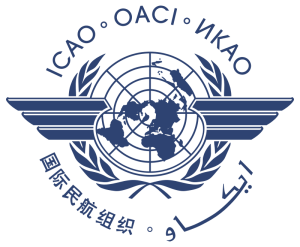In the past, airport lighting systems were generally easy to operate. In many cases, it typically involved a small number of air traffic controllers flipping switches to turn individual incandescent bulbs on and off as needed. With a relatively low number of jets using the runways and taxiways, this system worked efficiently for decades.
However, airport operations have grown more sophisticated since those early days, necessitating the adoption of advanced technology to ensure that lighting systems operate smoothly and ensure safe landing and taxiing of aircraft traffic.
Enter remote monitoring and control systems, which help ensure airport lighting systems run smoothly and reliably, especially at night or during inclement weather and other low-visibility situations.
What Are Airport Lighting Remote Monitoring And Control Systems?
Managing airport lighting and control systems is a complex and resource-heavy task, requiring manual in-person inspections and checks at regular intervals. However, despite your technical teams’ best efforts, they may not always detect potential problems before they become critical issues that can impact your airport’s safety and efficiency,
Remote monitoring and control solutions allow airport operations teams to manage their runway lighting systems automatically through real-time monitoring, diagnostics, and automated responsiveness when required under various conditions. Remote solutions ensure consistent safety, efficiency, and reliability while reducing maintenance costs.
These systems are made up of several key tech-based components, such as:
- Advanced sensors that monitor lighting and power system parameters such as light intensity, operational status, and problems such as bulb failures, power fluctuations, and environmental conditions such as weather patterns that can affect lighting performance
- A robust, reliable data communication network to transmit critical data from the lighting systems to a central control center via fiber optic cable or wireless systems, depending on the airport’s infrastructure and what kind of range is required
- Automated controllers to make adjustments to lighting settings based on data reported by the sensors, such as dimming, brightening, or switching between lighting modes
- Centralized software that collects and displays real-time data, such as system status, maintenance alerts, and control options, for airport personnel to analyze and make informed decisions upon
- Notification systems that automatically send lighting system updates to airport maintenance personnel or control tower operators via SMS, email, or other messaging platforms when an issue is detected, to ensure prompt response
- Remote access controls to ensure only authorized personnel can log in, monitor the system, and make lighting adjustments from anywhere, using secure, web-based or app-based platforms
- Cloud-based or physical servers that collect and store data that can easily be retrieved for analyzing trends, identifying recurring issues, and planning maintenance schedules
Read More: Integrating Automated Surface Detection Equipment With Your Runway Lighting Systems
Why You Should Consider A Remote Monitoring And Control Solution For Your Runway Lighting Infrastructure
At Airport Lighting Company, we understand that safety, reliability, and efficiency are all top of mind with your leadership team. We also know that finding cost savings wherever possible is critical to your bottom line.
Remote control and monitoring solutions give you all of the above and more. They help proactively identify and address problems before they become critical issues, giving your maintenance team ample opportunity to solve issues before they can negatively impact your runway and taxiway operations.
Preventing service disruptions helps you save money on avoidable maintenance. However, remote control and monitoring solutions help optimize your costs in other ways as well. For example, the automated control system can adjust lighting based on weather conditions, increasing intensity in subpar visibility conditions and decreasing it in clear conditions. This functionality helps optimize your energy consumption by increasing intensity only when needed.
Additionally, many systems feature robust analytics that provide deep insights into such metrics as runway and taxiway usage patterns, energy consumption, and failure trends. This reliable data supports informed decision-making for strategic planning and lighting component upgrades.
Airport lighting technology is becoming more robust all the time, with another advancement always seemingly just around the corner. When you need trusted advice on new airport lighting technology based on years of experience, talk to the experts at Airport Lighting Company. Our qualified and passionate technicians are always happy to provide practical, cost-effective airport lighting and power equipment solutions that ensure your runway and taxiway lighting operations run smoothly, efficiently, and safely at all times.
Read More: The Most Impactful Advances In Airport Lighting Technology
Call Airport Lighting Company For The Latest In Airport Lighting Technology
The Airport Lighting Company team is standing by to answer your questions about how our tech-based products can help improve the safety, reliability, and efficiency of your runways. Call 315-682-6460 for fast, friendly service you can count on.






